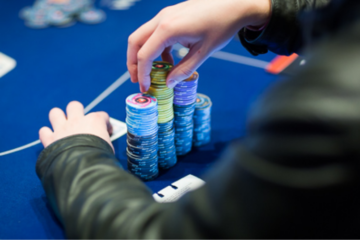How to Play Irish Poker

When you first learn how to play Irish poker, the rules are a little different than the traditional card game. The idea is to win by laying cards in front of the opponent, but not falling into a trap that they can lay.
Poker is much more than an action-packed game of chance. Poker players usually begin at a table with only one other player and each person is trying to get their hand to the pot by picking up as many cards as possible. This means that the house has a big part to play, because the more people who can afford to lay cards, the more cards they will lay.
If you are going to learn how to play Irish poker, it is best to learn the different types of lay card tricks so that you know what kind of cards you can expect to lay. In the process of learning about the lay types, you will also be able to determine the level of bluffing you can expect.
When you first learn how to play Irish poker, you will likely use lay card A for lay card B. This may seem obvious, but sometimes the lay card a player will actually use will vary. However, the advantage to lay card A is that it means that a lay card B is not likely to come out of the deck; therefore, it is straight.
Many players find that lay card A is a good one because it gives them the best chance to pick up cards when they lay it. A lay card B would have a better chance to land on the table, however, since there are more cards in the deck. Thus, when it is played, it is wise to wait until the opponent uses lay card B.
More Reference: How to Play Indian Poker
If you lay card A in the middle of the deck, you are getting two cards. If the opponent does not use lay card A, you can then lay card B, which means that you are getting three cards. It is important to understand that if you are going to lay A and the opponent uses lay card B, you will also get three cards.
Use this type of lay card only when you are winning, since it can lead to your opponent getting more cards. As long as you do not end up getting three of a kind (four cards), a lay card A is a good one. You should also use lay card A when you know you are ahead on the board, such as when you know that your opponent’s bet is very low or they just passed on your straight.
If the opponent uses lay card A, it is very likely that you will get two cards. After the other player gets their three cards, you can use lay card B. Since you will still be behind, it is wise to not put any money down. This gives you some breathing room so that you can figure out how to play Irish poker and still beat your opponents.
When you know that you are ahead on the board, it is wise to lay card A. Even though it is good to lay card A at this point, you must be careful that you do not become so far ahead that you put yourself in a vulnerable position. While you may be ahead, it is still important to back off and start to lay your lay card.
If you do not lay card A, you could still make a big pot if you play the lay card as follows: when the other player uses lay card A, you can use lay card B. If the other player does not use lay card B, you should also take some chips. When you know that you are ahead on the board, you should never have your hand exposed.
When you learn how to play Irish poker, you should not try to bluff your way to victory. Bluffing leads to losing, even if you think you are winning the game. As a player, you should always make your opponent feel like you are going to bluff them, but just to be sure that you are the one bluffing them and you are not going to lose the game.
It is sometimes difficult to bluff when you have laid card A. If you play lay card A, you might be surprised to find that you are not bluffing your opponent and winning. !




